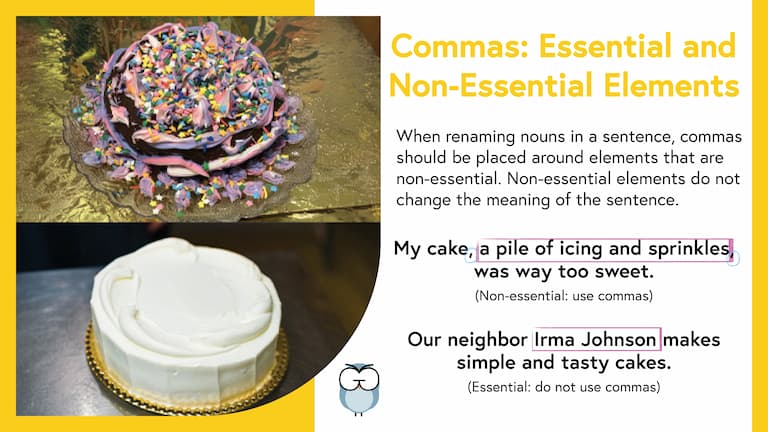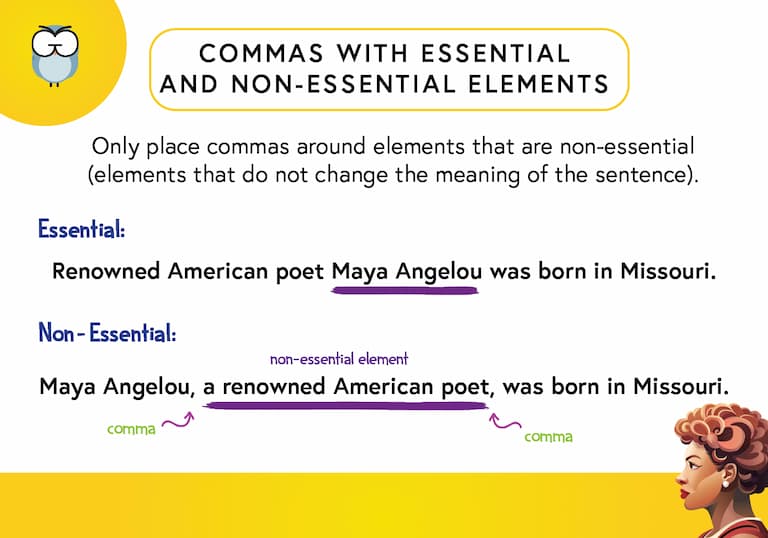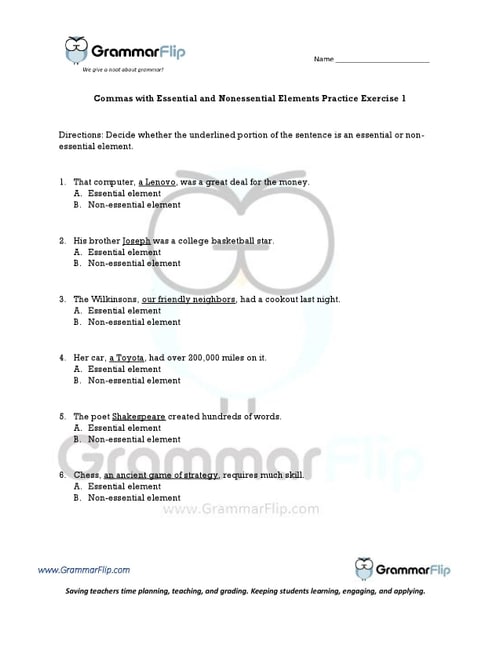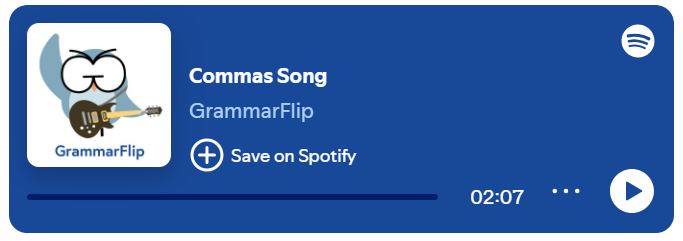When Do I Use Commas with Essential and Non-Essential Elements?
When adding words or phrases that rename nouns in the sentence, commas only need to be placed around elements that are non-essential, or elements that do not change the meaning of the sentence.
Some examples of commas with essential and non-essential elements would be the following:
Non-Essential: Maya Angelou, a renowned American poet, was born in St. Louis, Missouri in 1928.
Essential: Renowned American poet Maya Angelou was born in St. Louis, Missouri in 1928.
Non-Essential: Led Zeppelin, an English rock band, is best known for their song “Stairway to Heaven.”
Essential: English rock band Led Zeppelin is best known for their song “Stairway to Heaven.”
Non-Essential: Chicken and waffles, a favorite American soul food dish, is a popular cuisine in Baltimore.
Essential: The favorite American soul food dish chicken and waffles is a popular cuisine in Baltimore.
Long-Form Videos: Commas with Essential and Non-Essential Elements
Long-form instructional video lessons allow students to engage with grammar concepts in more depth and detail.
This format provides students with a stronger foundation and a more comprehensive understanding of commas with essential and non-essential elements.
Short-Form Videos: Commas with Essential and Non-Essential Elements
Short-form videos are an excellent way to review grammar concepts. Our two-minute instructional videos help students review the concept of commas with essential and non-essential elements to further solidify their understanding.
Memorable Images: Commas with Eseential and Non-Essential Elements

The use of images to connect visual cues with concepts makes it simpler for students to grasp and remember key ideas. GrammarFlip’s memorable images create visual associations that make commas with essential and non-essential elements more engaging and easier to retain.
Definition Cards: Commas with Essential and Non-Essential Elements
Definition cards reinforce grammar concepts by providing clear and concise explanations that students can easily reference for quick review and better retention. GrammarFlip’s definintion cards help students review the concept of commas with essential and non-essential elements to further solidify their understanding.

Music: Commas with Essential and Non-Essential Elements
Learn grammar concepts through music! The unique verses and catchy chorus in our “Commas Song” will help your students further understand commas with essential and non-essential elements. Listen for yourself and see if you don’t walk away singing this song to yourself!
Listen to GrammarFlip Music via Spotify, Apple, or Amazon!
Music Videos: Commas with Essential and Non-Essential Elements
Music videos make grammar concepts more engaging and memorable by combining rhythm, visuals, and repetition to reinforce learning. GrammarFlip’s music videos help students retain the concept of commas with essential and non-essential elements more effectively while making the learning process fun and interactive.
Understanding Essential and Non-Essential Elements
Understanding the difference between essential and non-essential elements is very important when it comes to using commas correctly.
Essential elements are parts of the sentence that are necessary to the meaning of the sentence. Without these elements, the sentence would be unclear or its meaning would change. Because these elements are crucial to the meaning of the sentence, they are not set off with commas.
Essential Element: The players who practice hard will make the team.
The essential element “who study hard” is critical to the meaning of the sentence because it specifies which students will make the team. If you remove this element, the meaning of the sentence would change entirely. It would instead imply that all players will make the team. See how important that element is?
Non-essential elements simply provide additional information to a sentence, but this additional information is not crucial to the overall meaning of the sentence. The sentence would still make sense and keep its meaning if these elements were taken out of the sentence. Thus, because they provide non-essential information, we set them off with commas.
Non-Essential Element: My sister, who lives nearby, is visiting us later.
The non-essential element “who lives nearby” is not critical because it simply provides extra information about the sister. If you remove this non-essential element, the sentence still makes sense and the meaning has not changed.
Many times, appositive phrases can be non-essential elements in a sentence, but not always. Be sure to check whether the appositive phrase is critical to the meaning of the sentence or not, and then use that to determine whether it needs to be set off by commas.
It can sometimes be tricky determining whether or not something is essential or non-essential, but if you cover up the clause or phrase in question, see if the overall meaning changes. If it doesn’t change the meaning (ie, non-essential), be sure to place commas around it.
Keep in mind that there are several other times you’ll need to use commas in your writing such as commas with items in a series, commas between two adjectives, and commas after introductory clauses. Also, be sure to avoid comma splices in your writing.
Download a Free Worksheet on Comma Usage with Essential and Non-Essential Elements!
Click the image below to download your free worksheet on comma usage with essential and non-essential elements!

Need a grammar program that provides the instruction and grading for you?
Explore More GrammarFlip Lessons!
Parts of Speech lessons provide the building blocks of grammar. GrammarFlip covers these topics in detail to ensure a solid foundation is built. First time learners and students seeking to review the parts of speech can both benefit from the instructional videos and slide show reviews.
Parts of the Sentence lessons are critical for understanding how the parts of speech function in language construction. From the basic to the advanced, these lessons will cover a wide range of grammar topics that can be used in any grade level or classroom.
Mechanics and Usage lessons equip students with the necessary skills to communicate clearly to all audiences. With a focus on the application of these concepts in student writing, these lessons tie together both simple constructions of grammar as well as the more complex such that any age or skill level of student will benefit.



